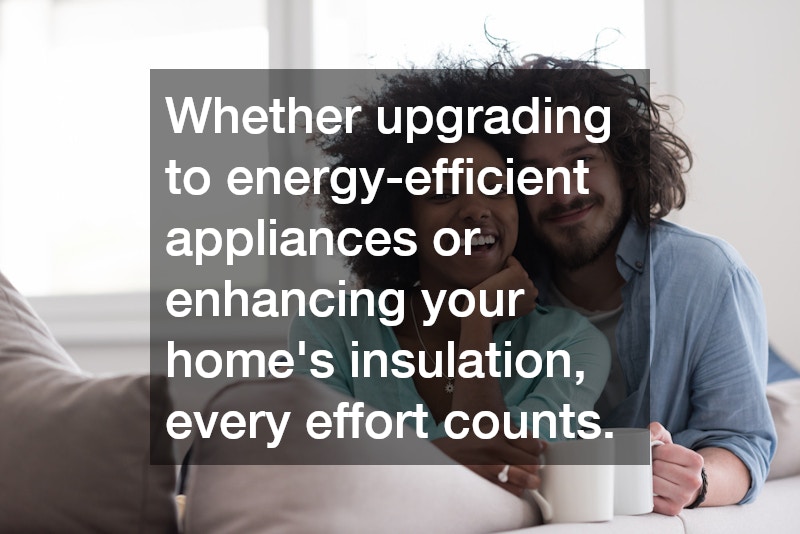As a new homeowner, managing your home efficiently during the winter can be both challenging and rewarding. Cold weather not only impacts comfort but also poses a significant financial burden due to increased energy consumption. Implementing strategic home energy saving tips during the winter months is crucial to maintain a cozy environment while keeping utility bills in check. This article will explore a range of strategies designed to enhance your home’s energy efficiency during the winter.
By adopting these measures, new homeowners can enjoy a warm, energy-efficient home while contributing to environmental conservation.
Understanding the importance of energy conservation is the first step toward efficient home management. Whether you live in a region with mild or severe winters, employing smart energy-saving strategies can make a notable difference in your household’s overall energy consumption. The tips provided in this guide are designed for easy implementation, making it possible for even the most inexperienced homeowners to reduce energy costs effectively. From managing thermostat settings to enhancing insulation, there are several proactive measures one can take to optimize energy use in the home.
Optimizing Thermostat Settings
The thermostat is a pivotal tool in managing your home’s indoor climate effectively. By setting it to the lowest comfortable level, you can make substantial savings on your heating bill. It is recommended to keep your thermostat around 68°F (20°C) when you are at home and at a lower temperature when you are away or asleep. Utilizing a programmable thermostat offers homeowners the flexibility to tailor heating schedules to their daily routines. Additionally, smart thermostats can adapt to your behavior over time, making it easier to maintain efficient heating practices without constant adjustments.
Maintaining consistent temperatures helps in preserving energy and lowering heating costs. Every degree lower on your thermostat can result in a 1% savings on your energy bill over an 8-hour period. It’s also crucial to consider zoned heating, which allows different areas of your home to be heated separately based on usage. This tailored approach reduces unnecessary heating in unused rooms, further enhancing energy conservation. Always remember to check your thermostat battery and replace it as needed to prevent disruptions in your heating schedule.
Enhancing Home Insulation
Insulation plays a critical role in maintaining warm indoor temperatures by reducing the exchange of heat with the outdoors. Proper insulation minimizes the need for excessive heating, thereby lowering energy consumption. New homeowners should inspect their insulation, focusing on areas like the attic, walls, and basement, to ensure it meets current standards. Adding more insulation in these areas can drastically reduce heat loss and improve overall comfort during the winter. In particular, the attic is a major source of heat loss, and boosting its insulation can yield impressive energy savings.
Choosing the right type of insulation is also crucial. For existing homes, blown-in or spray foam insulation can be ideal for covering areas that are difficult to reach. These options fill gaps and crevices effectively, ensuring a more airtight seal. For new constructions, rigid foam boards or structural insulated panels may provide better coverage. Consulting with an insulation specialist can offer valuable insights into the most suitable options for your home’s needs. In addition, ensuring windows are double-glazed and doors are well-sealed complements the insulation efforts further.
Adopting Energy-Efficient Appliances
Upgrading to energy-efficient appliances is one of the most impactful ways to lower home energy consumption. Modern appliances with high energy efficiency ratings, such as those with the ENERGY STAR label, consume far less energy compared to older models. For new homeowners, prioritizing these appliances, especially heating systems, refrigerators, and laundry machines, can result in significant long-term savings. It’s also advisable to consider the size and capacity of appliances to match your household needs, avoiding unnecessary overconsumption of energy. This transition to efficient appliances might involve initial investment costs, but the energy savings achieved often offset these expenses over time.
Another important aspect is regular maintenance and appropriate usage of these appliances. Routine checks can ensure that appliances operate at optimal efficiency, preventing energy wastage. For instance, periodically cleaning filters and vents in heating units can improve their performance and longevity. Additionally, using energy-efficient settings on appliances further contributes to lowering consumption. Homeowners should also remember simple practices like unplugging devices when not in use and utilizing power strips to avoid phantom loads, where devices draw energy even when turned off.
Ultimately, the steps taken today are investments in a more sustainable future. Whether upgrading to energy-efficient appliances or enhancing your home’s insulation, every effort counts. As a new homeowner, embracing these home energy saving tips will set the stage for a comfortable and cost-effective winter, aligning fiscal prudence with environmental stewardship.





